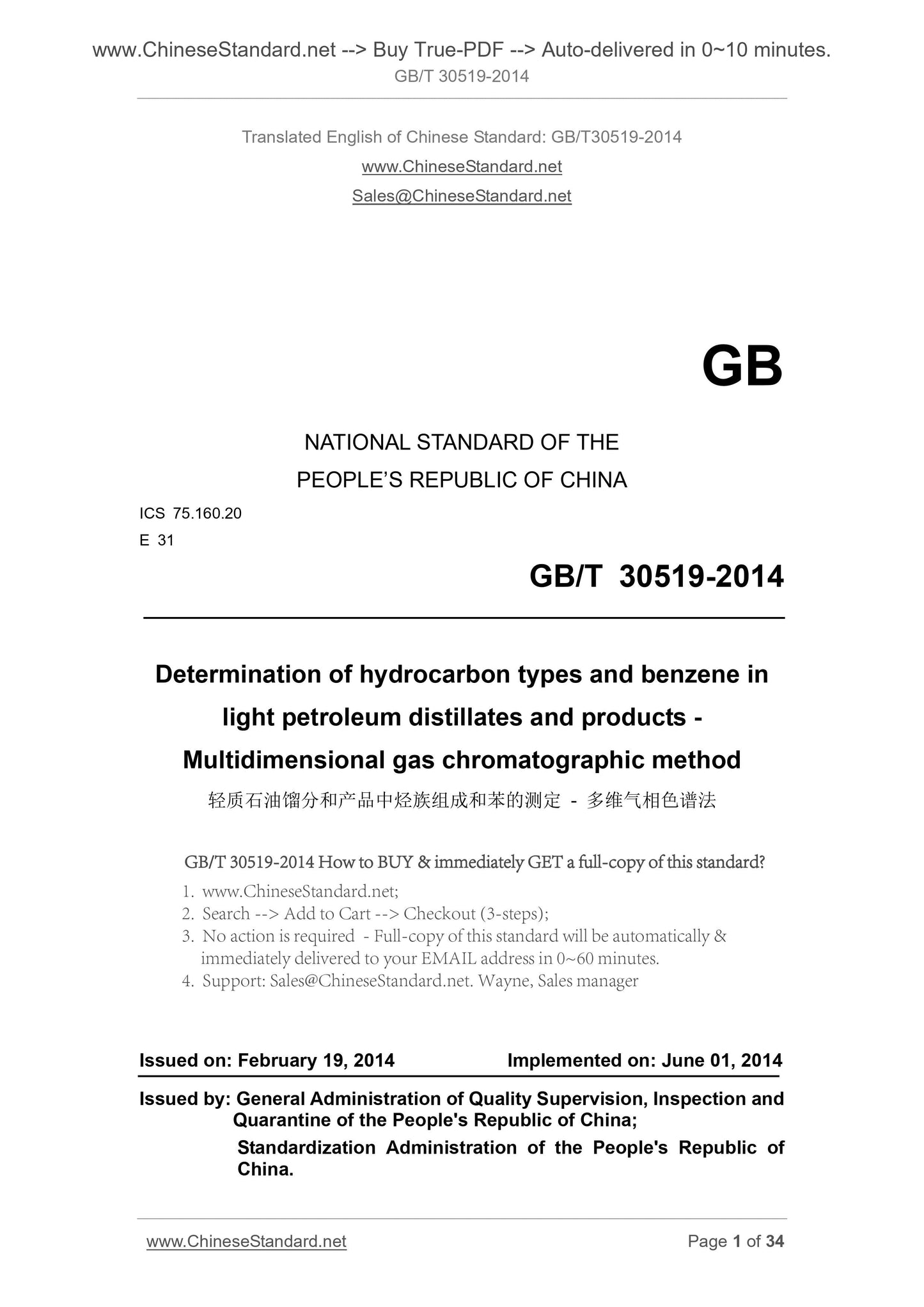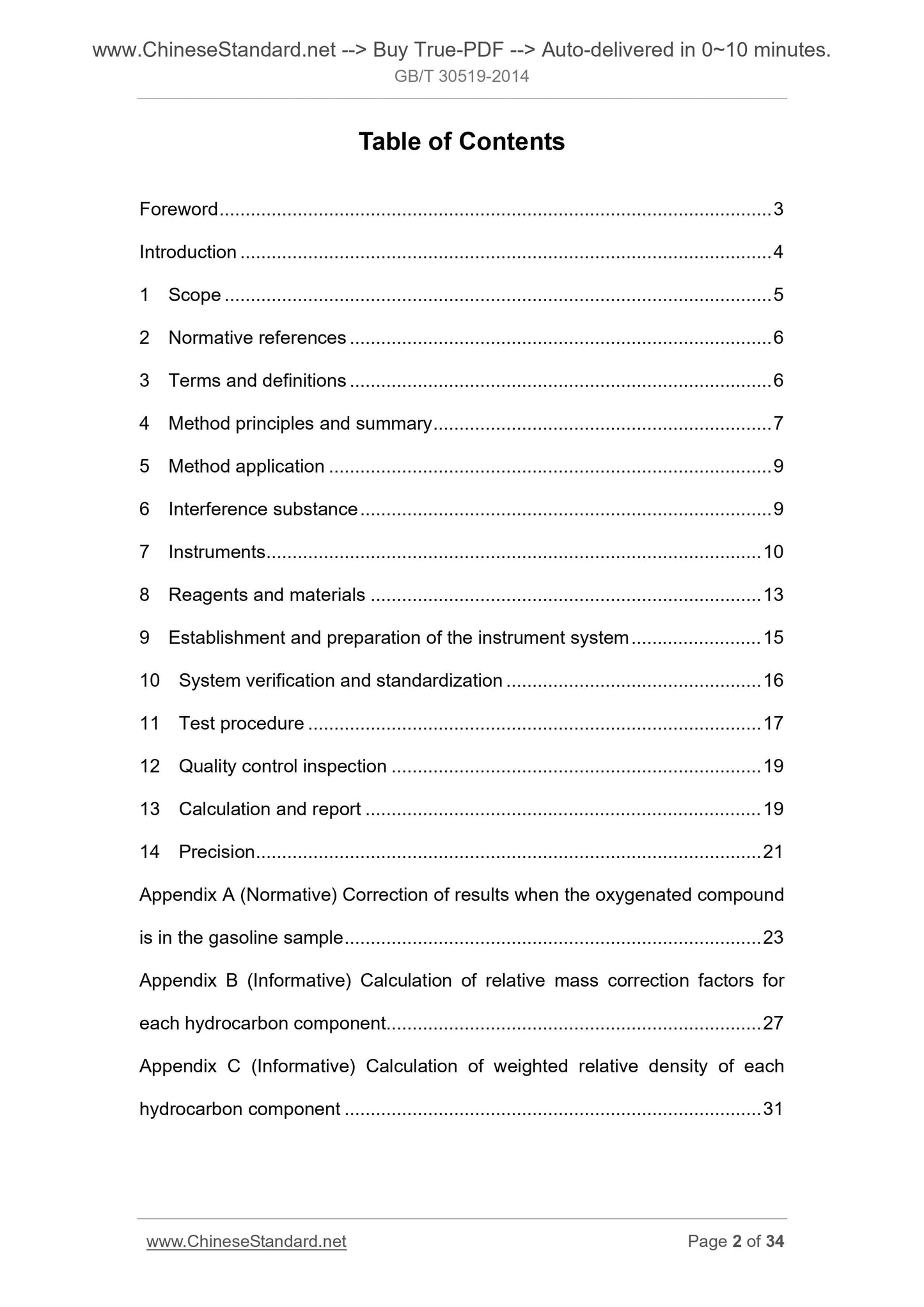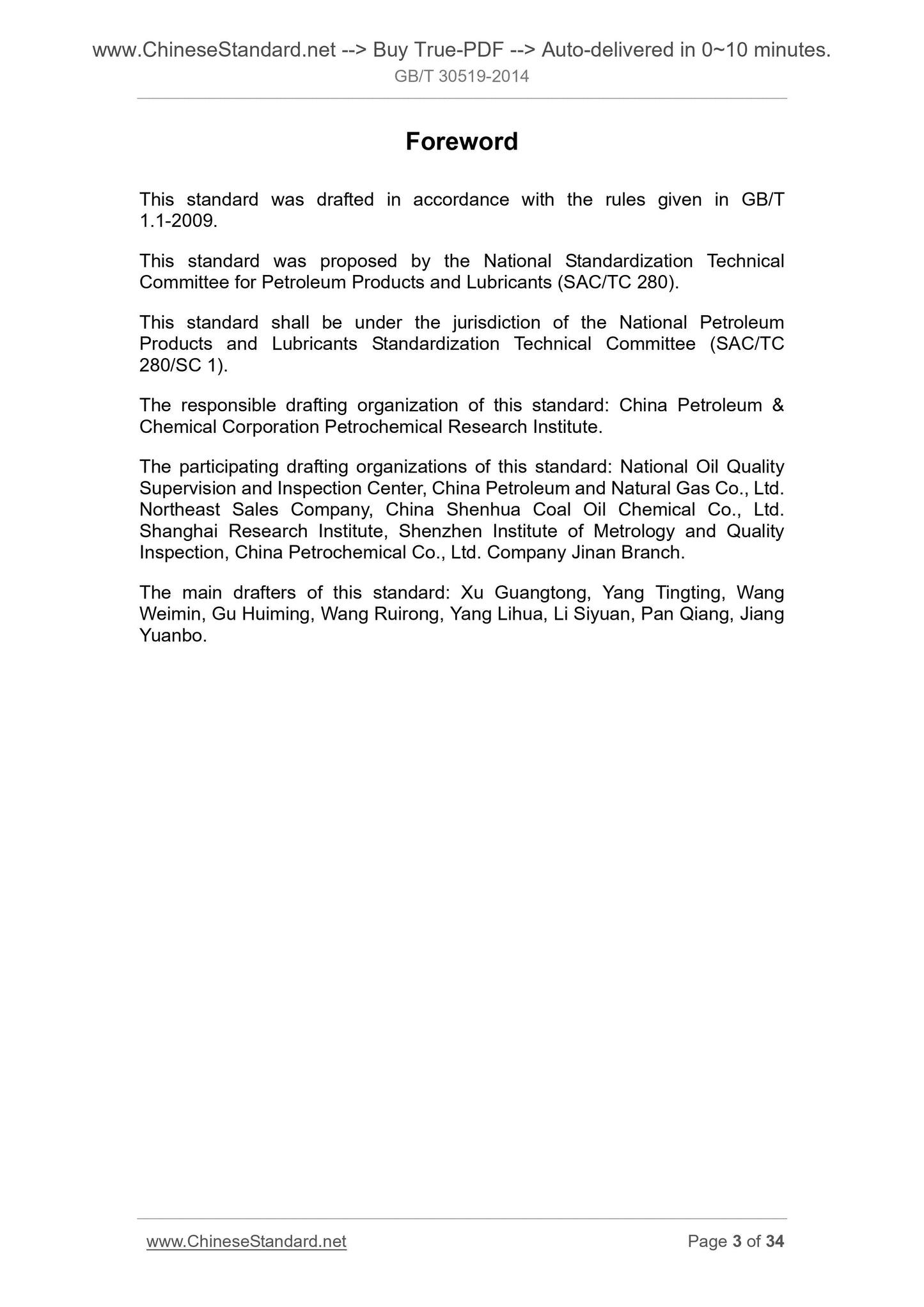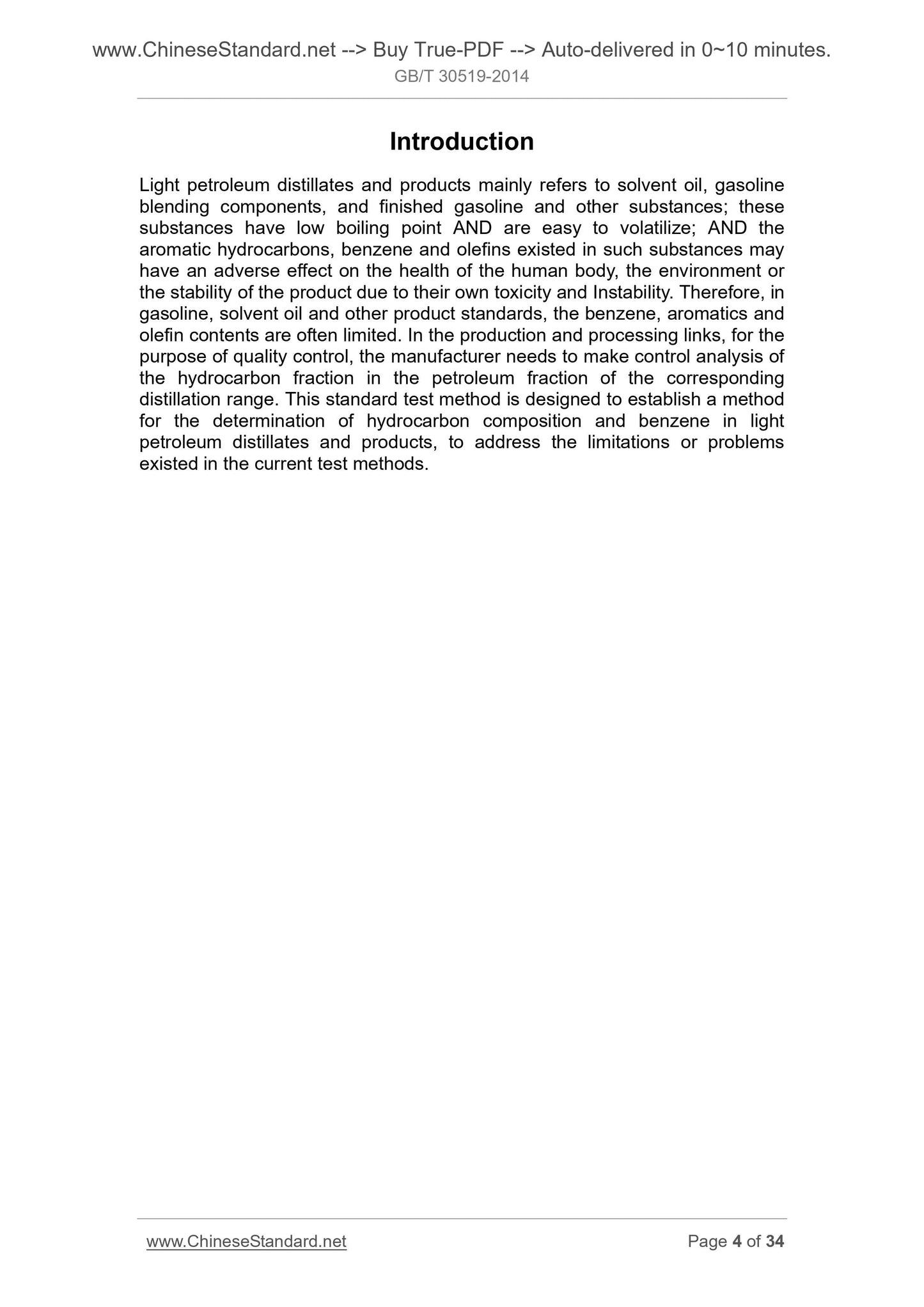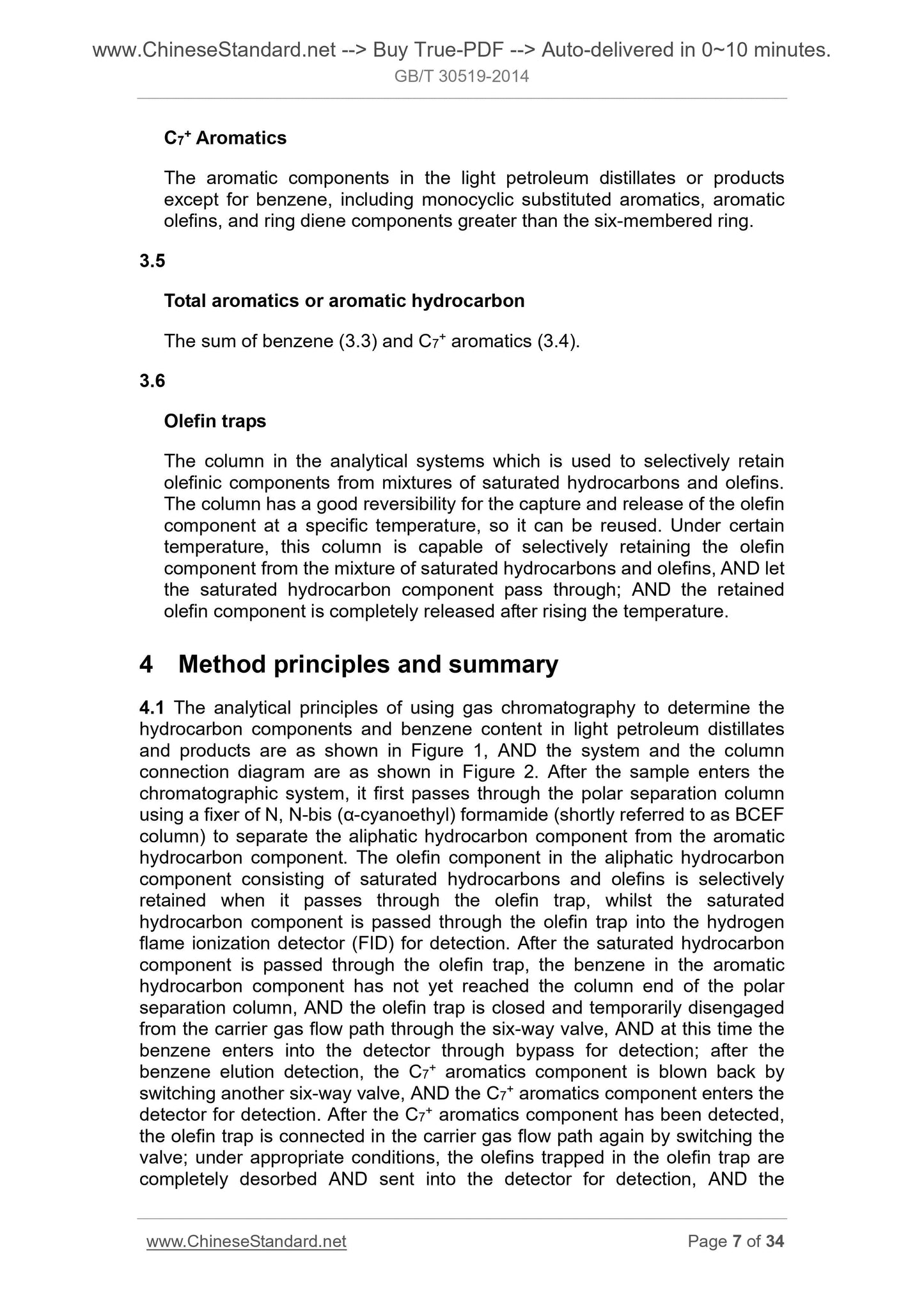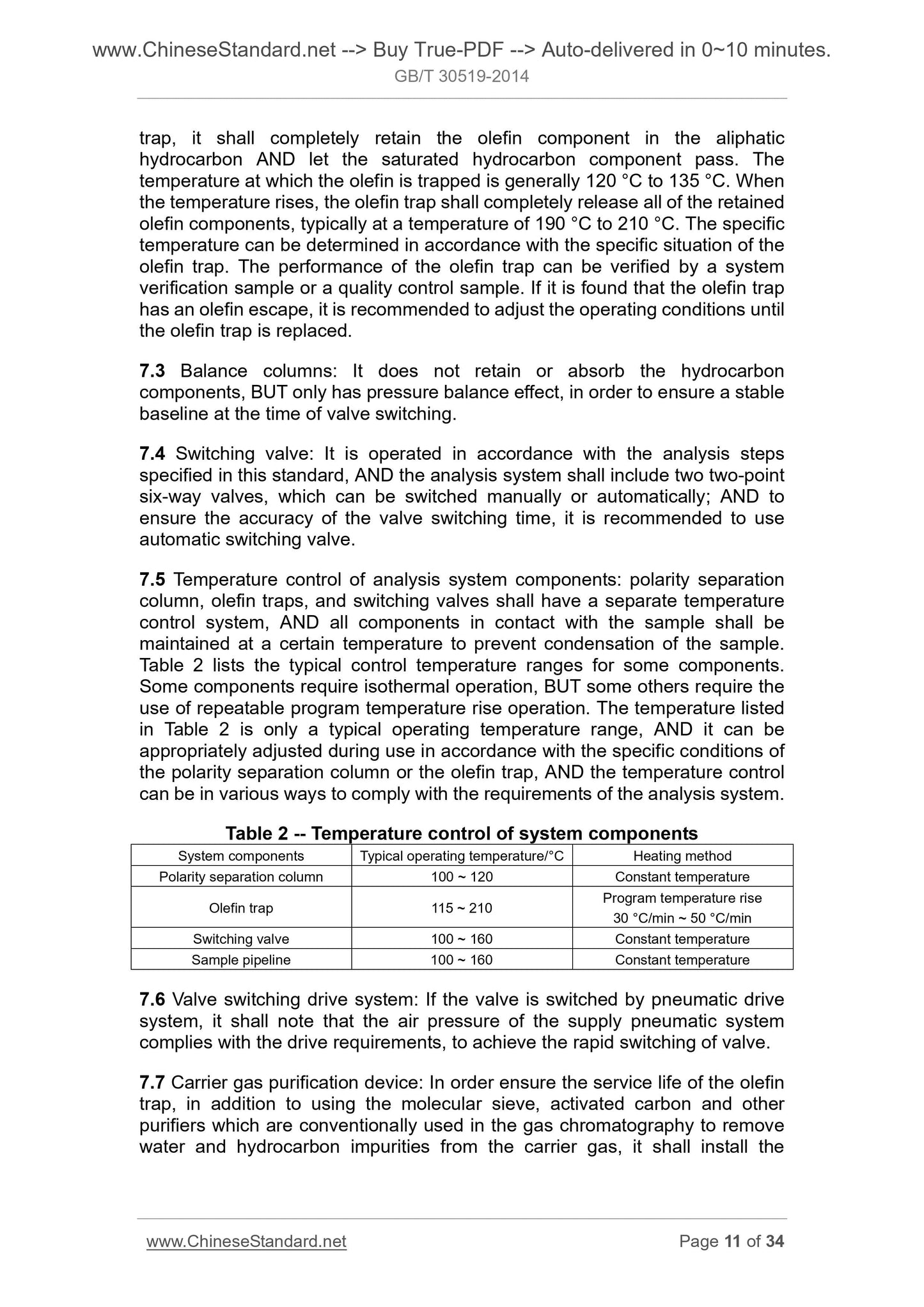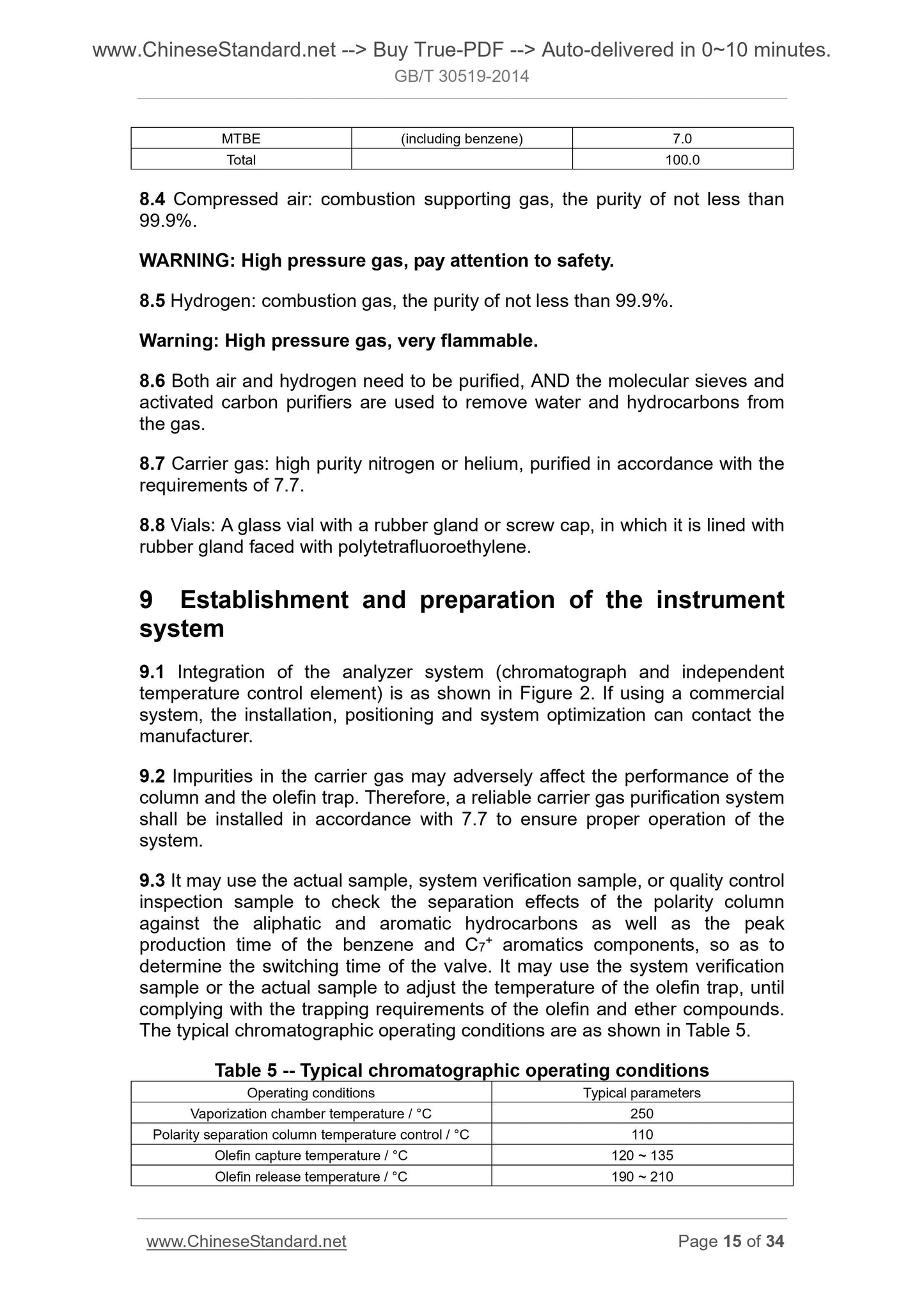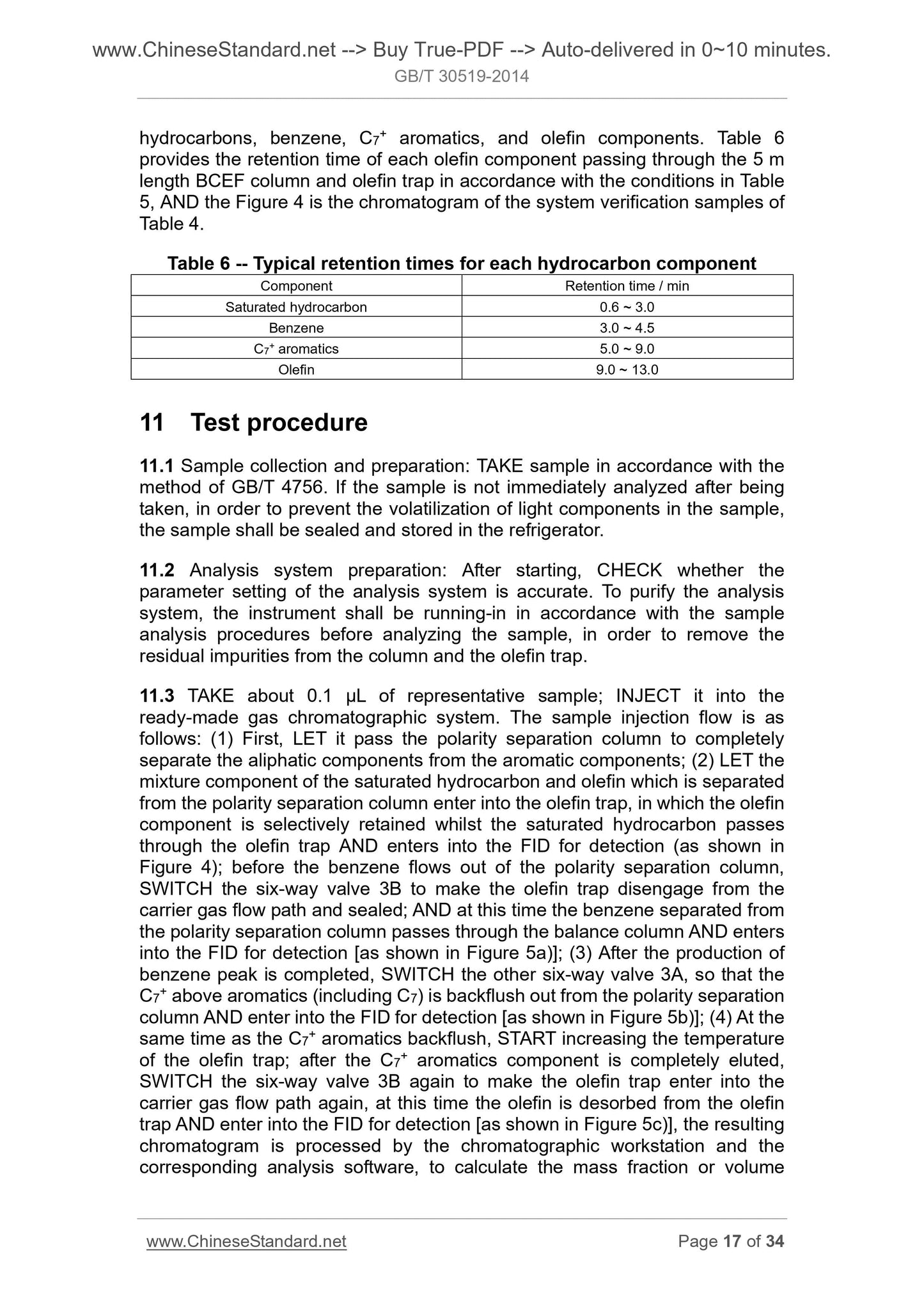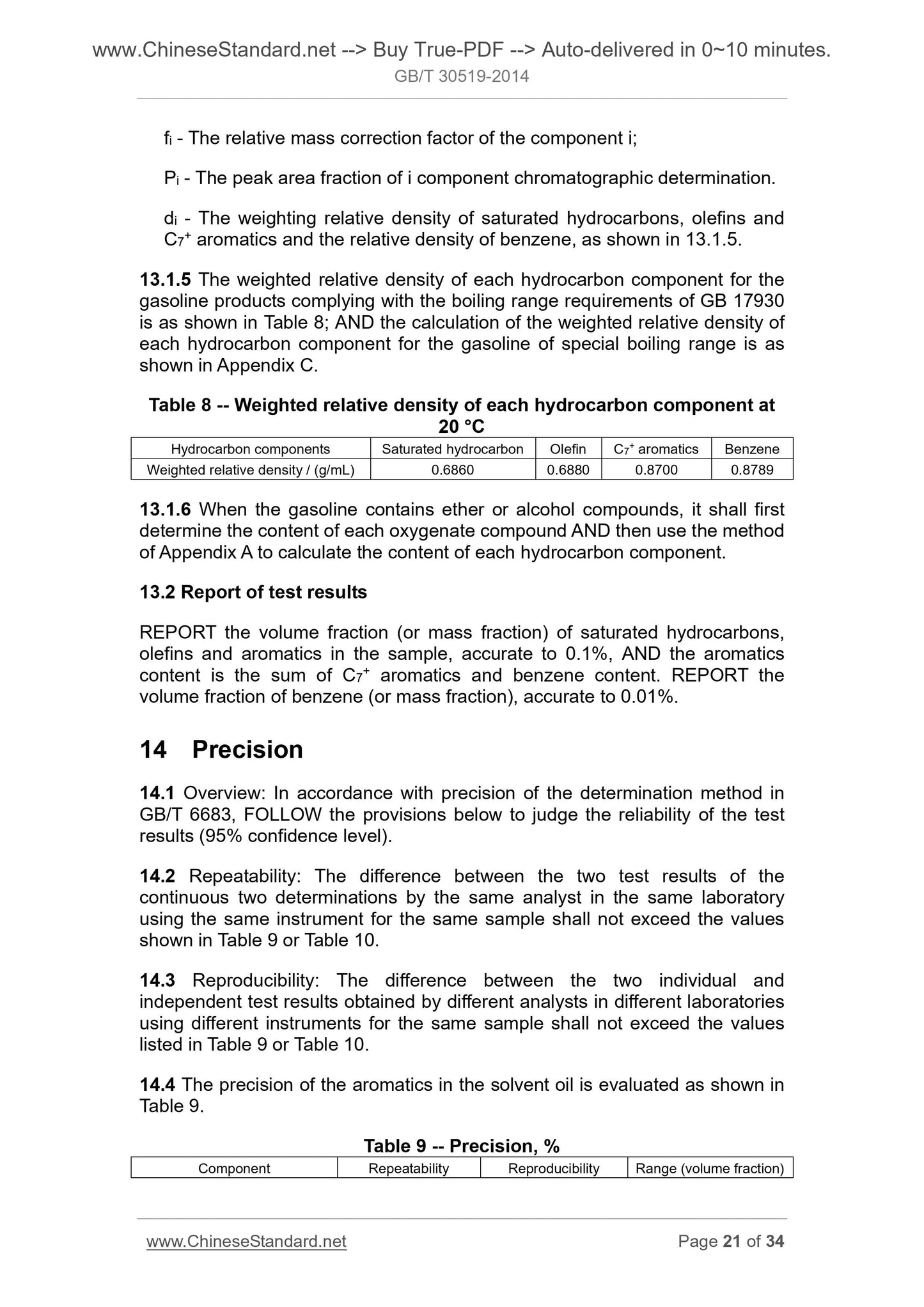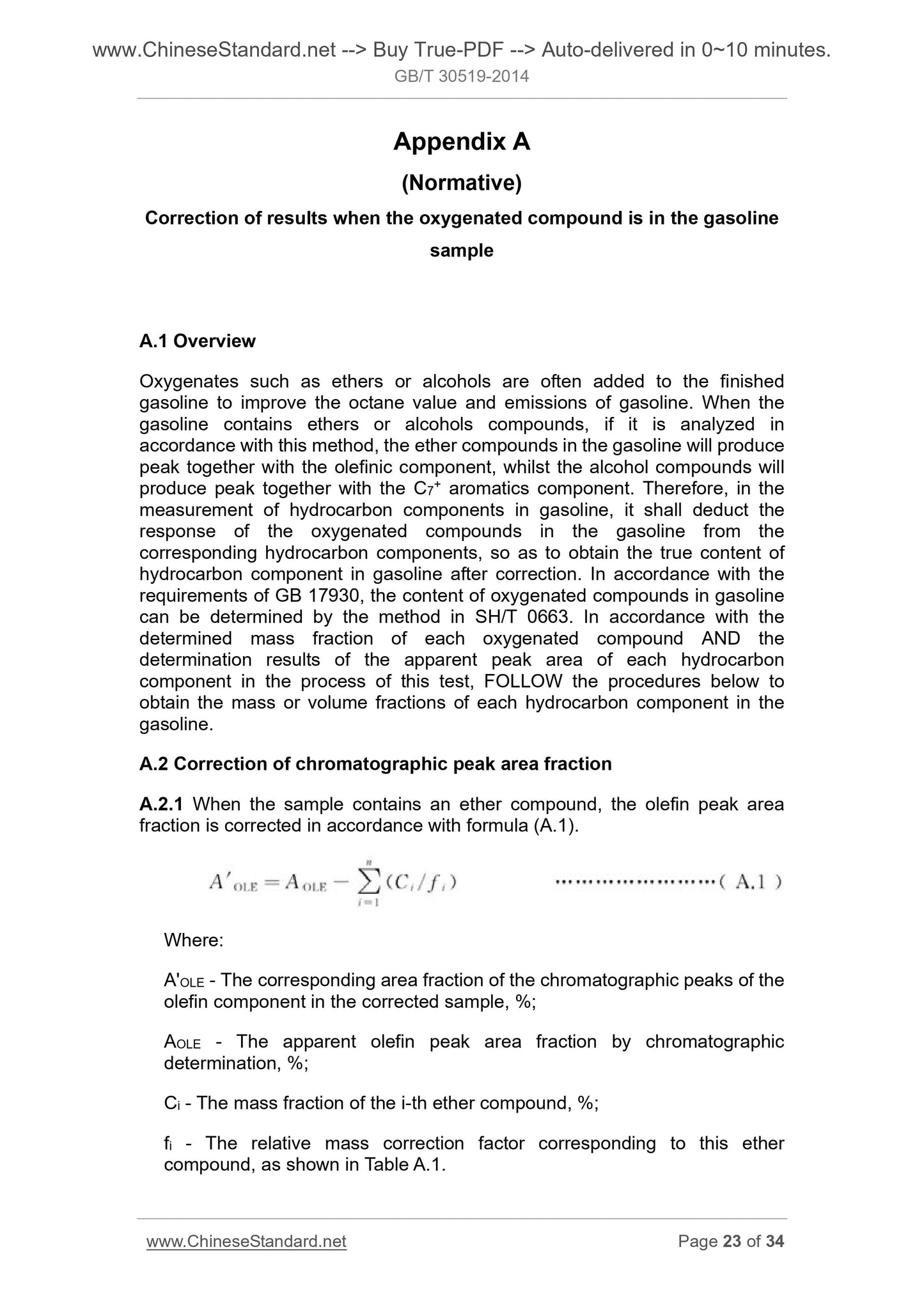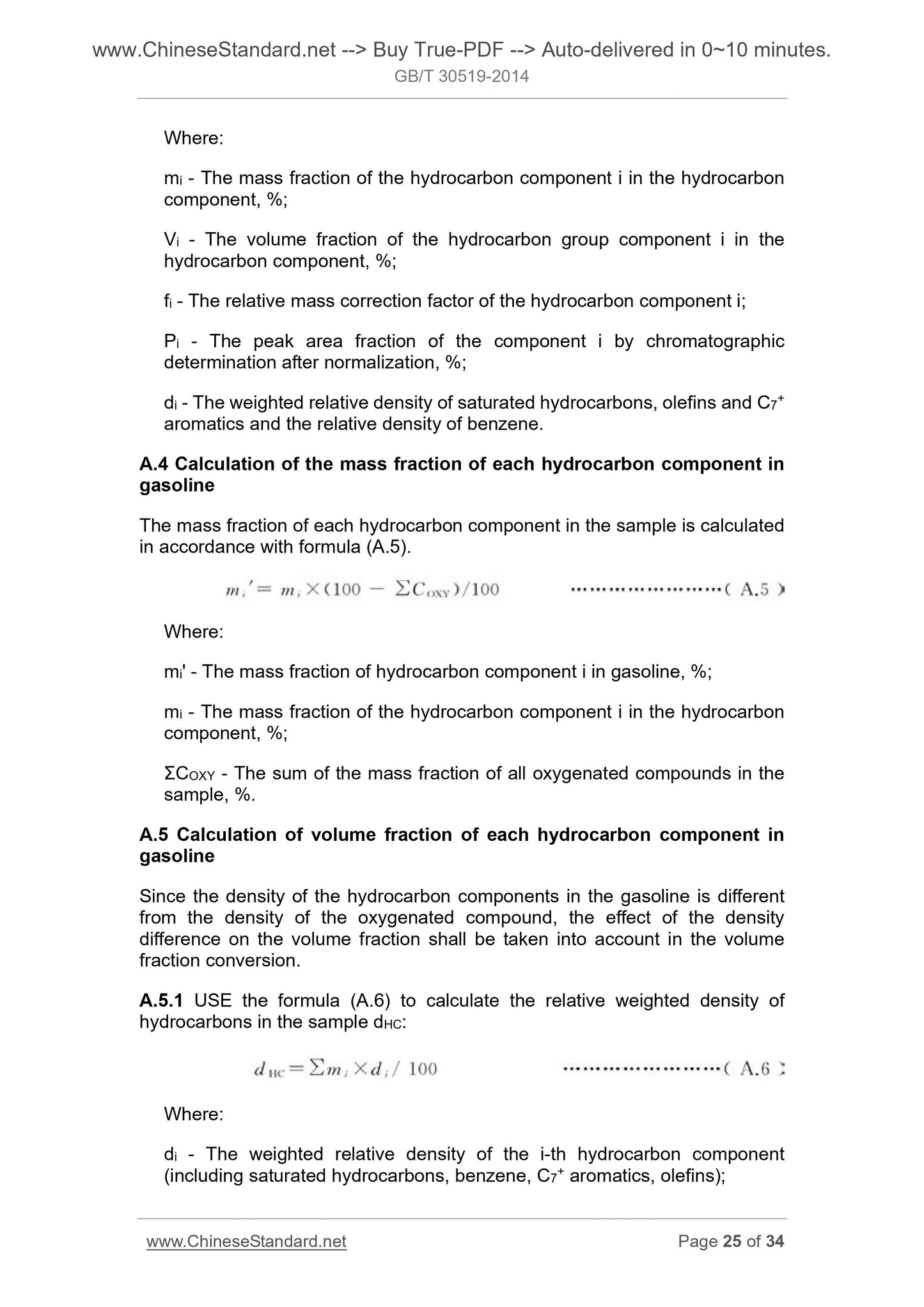1
/
of
12
www.ChineseStandard.us -- Field Test Asia Pte. Ltd.
GB/T 30519-2014 English PDF (GB/T30519-2014)
GB/T 30519-2014 English PDF (GB/T30519-2014)
Regular price
$150.00
Regular price
Sale price
$150.00
Unit price
/
per
Shipping calculated at checkout.
Couldn't load pickup availability
GB/T 30519-2014: Determination of hydrocarbon types and benzene in light petroleum distillates and products - Multidimensional gas chromatographic method
Delivery: 9 seconds. Download (and Email) true-PDF + Invoice.Get Quotation: Click GB/T 30519-2014 (Self-service in 1-minute)
Newer / historical versions: GB/T 30519-2014
Preview True-PDF
Scope
This standard specifies the test methods of using multidimensional gaschromatography technology for the determination of hydrocarbon composition
and benzene content in light petroleum distillates and products.
This standard is applicable to the determination of hydrocarbon composition
and benzene content in light petroleum distillates or products having a final
boiling point not more than 215 °C such as gasoline blending components,
solvent oils, gasoline products and the like. As for the concentration range of
determination, the volume fraction (OR mass fraction) of olefin is from 0.5% to
70%, the volume fraction (OR mass fraction) of aromatic hydrocarbon is 1% to
80%, AND the volume fraction (or mass fraction) of benzene is 0.2% to 10%.
This method is also applicable to the gasoline products processed from other
unconventional crude oils such as shale or oil sands or hydrocarbon fuels
synthesized from non-petroleum fossil fuels, such as Fischer-Tropsch
synthetic oils, provided that their boiling ranges comply with the requirements
of this standard. This method can only be used to determine the sample
exceeding the content range, BUT it cannot provide the precision data.
As for the gasoline for motor vehicles, in order to improve the performance of
gasoline products OR for other purposes, it often contains ether or alcohol
oxygen compounds, AND there may also be a variety of oxygen compounds
coexisted, in such case the ether compounds in the sample will produce peak
together with the olefin component, whilst the alcohol compounds will produce
peaks together with the C7+ aromatics component. As for the
oxygen-containing gasoline samples, after the relevant test methods (such as
SH/T 0663) are used to determine the type and content of the
oxygen-containing compounds, AND the procedures in Appendix A are
referred to make necessary corrections of the results of the hydrocarbon
composition, this standard is applicable.
This standard does not apply to the determination of monomer component
content in each hydrocarbon group except benzene.
C7+ Aromatics
The aromatic components in the light petroleum distillates or products
except for benzene, including monocyclic substituted aromatics, aromatic
olefins, and ring diene components greater than the six-membered ring.
3.5
Total aromatics or aromatic hydrocarbon
The sum of benzene (3.3) and C7+ aromatics (3.4).
3.6
Olefin traps
The column in the analytical systems which is used to selectively retain
olefinic components from mixtures of saturated hydrocarbons and olefins.
The column has a good reversibility for the capture and release of the olefin
component at a specific temperature, so it can be reused. Under certain
temperature, this column is capable of selectively retaining the olefin
component from the mixture of saturated hydrocarbons and olefins, AND let
the saturated hydrocarbon component pass through; AND the retained
olefin component is completely released after rising the temperature.
Basic Data
| Standard ID | GB/T 30519-2014 (GB/T30519-2014) |
| Description (Translated English) | Determination of hydrocarbon types and benzene in light petroleum distillates and products - Multidimensional gas chromatographic method |
| Sector / Industry | National Standard (Recommended) |
| Classification of Chinese Standard | E31 |
| Classification of International Standard | 75.160.20 |
| Word Count Estimation | 26,292 |
| Date of Issue | 2/19/2014 |
| Date of Implementation | 6/1/2014 |
| Quoted Standard | GB/T 4756; GB/T 6683; GB 17930; SH/T 0663; ASTM D6733; ASTM D6839 |
| Regulation (derived from) | 2014 National Standards Bulletin No. 2 |
| Issuing agency(ies) | General Administration of Quality Supervision, Inspection and Quarantine of the People's Republic of China, Standardization Administration of the People's Republic of China |
| Summary | This Standard specifies the test methods for measuring light petroleum distillates and products Hydrocarbon Composition and benzene content by multidimensional gas chromatography. This Standard applies to final boiling point of not higher than 215��C light |
Share
